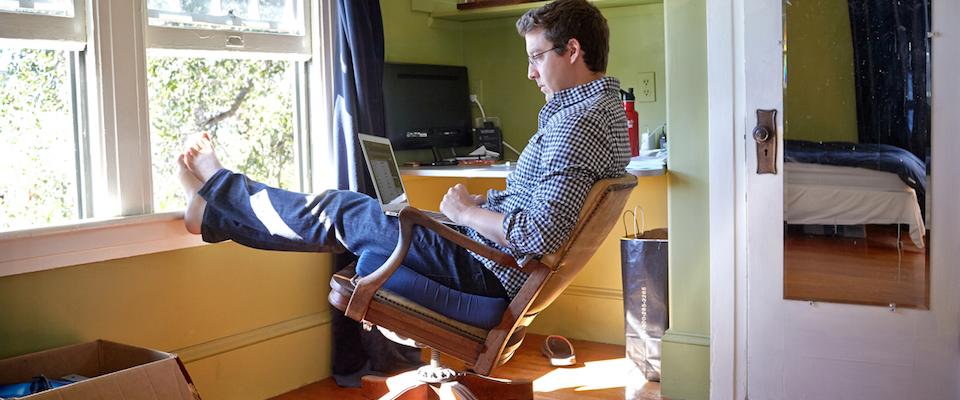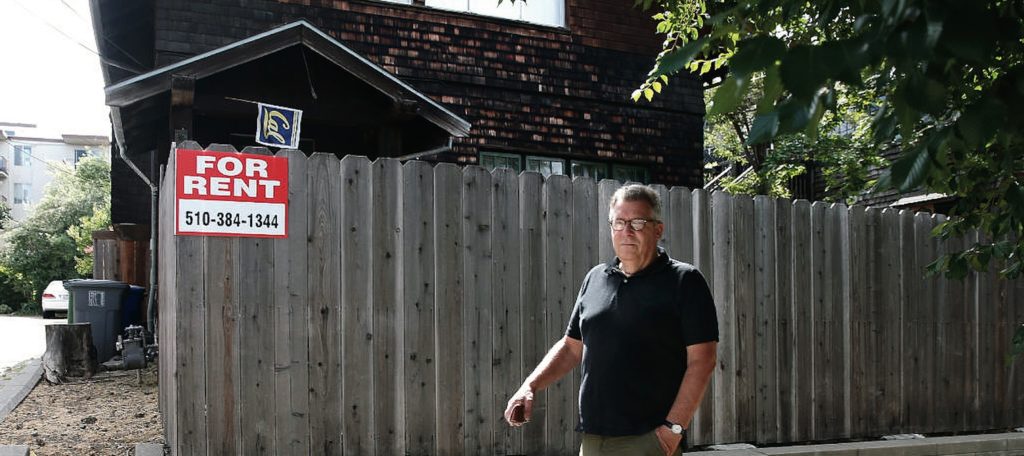A dose of housing reality
It’s confirmed: Low-income people of color are bearing the brunt of the housing crisis.
According to new reports from UC Berkeley’s Urban Displacement Project and the California Housing Partnership, rising housing costs are pushing already disadvantaged communities out—into neighborhoods high in poverty and low in resources.
“Our research provides quantitative evidence of what activists have been saying for years: The housing crisis is contributing to the re-segregation of the Bay Area,” Miriam Zuk, director of the Urban Displacement Project, told Berkeley News.
Researchers used data from 2000-2015 to map the displacement thousands of low-income, black families from their homes in San Francisco, Richmond, Oakland, and Berkeley. Moving into farther flung, unincorporated areas, these families face limited access to education, health services, and economic opportunity.
Stuffed, but not forgotten
A year after her fatal clash with a campus window, the late peregrine fledgling Lux has been given a second chance at, well, not life exactly.
Just this week, Carla Cicero, staff curator of birds at the Museum of Vertebrate Zoology, began preparing Lux’s body to become a “study skin.” Lux, Cicero’s 4,287 specimen in her 30 years at Cal, will become one of 750,000 used for research.
Of course, in her stuffing, Cicero was privy to the legal dangers of mutilation of rare birds for personal gain. It’s a felony if you keep it on your own mantel, but not if it sits behind museum glass.
“So now I’m going to turn the skin inside out,” Cicero described as she prepped the bird. “Now the fun begins. So basically, you just roll it like a sock, use the bill, there it goes.”
Another win for DNA
Last Thursday, longtime Berkeley safety specialist Roy Charles Waller was arrested in connection with 12 counts of violent sexual assault. Believed to be the infamous “NorCal rapist,” Waller could face a life sentence for charges that date as far back as 27 years and span six counties.
Police tracked him down via the same public genealogy website GEDmatch that was used to find the Golden State Killer this past July. The new practice has raised difficult questions about the ethics of genetic policing and the future of DNA privacy, which we explored in depth here.
The hot, the dry, and the ugly
What is Glacier National Park without its glaciers? Sadly, we might soon find out.
A joint study between UC Berkeley and the University of Wisconsin Madison shows our National Park System is taking the hardest hits from climate change. In an unprecedented study, researchers analyzed weather from all 417 parks using data spanning over a century. The findings show national park temperatures have increased at nearly twice the rate as the rest of the country, and the parks are seeing greater decreases in rainfall than anywhere else.
But what makes our parks so vulnerable? As Patrick Gonzalez, associate adjunct professor in the Department of Environmental Science, Policy and Management at Cal, told Berkeley News, the national parks aren’t just a “random sample.”
“They are remarkable places and many happen to be in extreme environments [such as deserts, mountains, or polar ice caps],” Gonzalez explained. “Many are in places that are inherently more exposed to human-caused climate change.”
Based on this research, climate predictions for the upcoming century are less than optimistic. At best, the national parks should see a rise in temperature of about 2 degrees Celsius. At worst, the study predicts an increase of 9 degrees Celsius. These estimates may help guide park employees as they make major management decisions, including how to protect small mammals and natives plants at risk of extinction in the hotter, drier conditions.
Reporting the unreported
As the Kavanaugh saga continues to unfold, millions are wondering what the hearings will mean for victims of sexual violence across the country.
At Cal, a recent survey seeks to address some of the issues of on-campus sexual assault and harassment. In January, around 15,000 students, faculty, and staff completed the MyVoice survey responding to questions about their experiences with sexual violence and harassment. The results, published earlier this week, indicate trends similar to those found in national data, with nearly 30 percent of participating undergrads reporting some form of sexual harassment in the last five years.
So, what now? The MyVoice action planning team has created a list of key findings, which will inform a “campus-wide effort” to change social norms, provide preventative toolkits, and bring awareness to existing resources for victims of assault.
The wonderful world of quantum
Big things are happening in the microscopic realm of quantum research. This week, UC Berkeley and Lawrence Berkeley National Lab announced a new partnership, Berkeley Quantum, that will bring researchers together to explore the many unanswered questions of quantum science, like exactly where is all this dark matter we’ve been talking about? And what does an atom look like anyway?
The lab will receive $30 million in funds to support research over the next five years—and hopefully develop some cool new gadgets in the process. Such as the highly advanced, ever-elusive quantum computer, which we discussed in our 2017 Power issue here.
Read outside the lines
Fall is in the air, and this week bookworms across the country are snuggling down with some of history’s most controversial literary works. That’s right, it’s Banned Book Week, an awareness campaign started by library activist Judith Krug in 1982 that encourages people to “speak up for the right to read.” To celebrate, the Berkeley Library shared a selection of favorite banned or challenged works from Cal faculty and staff, including James Joyce’s 700-page epic, Ulysses, and a particularly controversial children’s book.
And, really, is there anything more Berkeley than reading banned books?






















